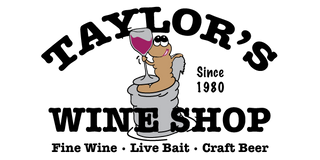While not exactly a brand name, like the "all tissues aren't Kleenex brand, but when we say hand me a Kleenex, we mean hand me a tissue," the Champagne & Sparkling Wine difference is similar. All Champagnes are sparkling wines, but not all sparkling wines are Champagnes. So while many people use the terms interchangeably, they really shouldn't be.
So what IS Champagne?
First off, Champagne is a place and like Port, Chianti and Bordeaux and the wine must come from that place to bear that moniker. Also, like most of these other regional wine names, the wine must also adhere to all winemaking rules that apply to that region. The key one for Champagne is that the wine must be made using the "Champagne Method, Methode Champenoise, or the Traditional Method." All those terms describe the classic method of making sparkling wine in the Champagne region, meaning that the secondary fermentation that creates the wine's carbonation happens in the bottle.
This secondary fermentation is accomplished by adding a mixture of sugar and yeast, called the liqueur de tirage, to still wine. This wine is then bottled and capped, with a bottle cap similar to ones found on beer bottles – not a cork. The yeast acts on the sugar and the resulting carbon dioxide remains trapped in the bottle. Quality sparkling wines are usually left on their yeast for several months, even up to six years. Next a dosage is added and this refers to the amount of sugar added to the sparkling wine just before corking to adjust the sweetness level of the finished wine. The dosage, or liqueur d’expedition (as it is called in French), is typically a mixture of sugar and wine, though it could just be a sweet wine. The tradition of adding dosage comes from Champagne. Champagne has a cool climate, where grapes struggle to ripen and the base wines for making Champagne are noted for their very high acidity. This acidity becomes even more marked after the second fermentation which creates the bubbles. The addition of a ‘dosage’ mixture was traditionally deemed necessary to balance the acidity in the wines and render them drinkable. At the end of this process the cap is removed and replaced with the traditional cork with wire cage.
Everything else is Sparkling Wine
Fizzy Moscoto, Prosecco, Pet-Nat, Lambrusco... these are all sparkling wines but not Champagnes, even if they are made using the traditional Champagne Method. But are there sparkling wines made that aren't crafted using the Champagne Method? Absolutely! The other way of making sparkling wine is called the Charmat Method or tank method. The Charmat method begins, like the traditional method, with the creation of an uncarbonated base wine. This wine is mixed with a measure of sugar and yeast (together called the liqueur de tirage), then put in a large stainless steel pressure tank, or autoclave. The yeast and sugar cause a second fermentation in the closed tank, which is held under pressure so the carbon dioxide from the fermentation is forced into the wine.
The second fermentation takes one to six weeks, after which the fizzy wine is immediately filtered and bottled. The dosage is added at bottling, usually to a brut level of sweetness (6–12 grams of sugar per liter).

